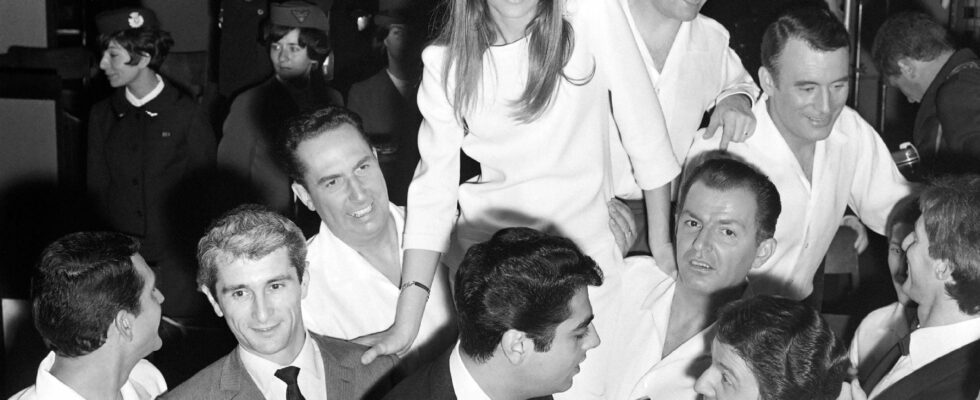Not sure that this afternoon of June 21, in France and in the approximately 120 countries around the world which are organizing the Music Festival, we are singing at the top of our lungs My love my friendby Marie Laforêt, The whirlwind by Jeanne Moreau or even Valentine, by Maurice Chevalier… We are not going to kid ourselves, the sovereignty of English over global show business, particularly since the Beatlesmania from the 1960s, is blatant. However, thanks to our language still present on the five continents, the French-speaking refrain is resisting. A book, This song reminds me of us (Editions du Patrimoine/Centre des monuments nationaux), coupled with an exhibition and 46 eponymous podcasts (on France Info), all signed by the journalist specializing in song Bertrand Dicale, prove this with around fifty “worldwide successes popular French-speaking music.
Names ? Tell me about love, by Jean Lenoir, performed by Lucienne Boyer in 1930 and crowned the first French world hit; I have two loves, by Joséphine Baker, sung in 1930 at the Casino de Paris; Wax doll, sound doll, by Serge Gainsbourg, performed by France Gall at Eurovision in 1965 and covered in 21 countries, from South Africa to Turkey; My lord, sung by Piaf to a text improvised by Moustaki in half an hour; Love is a rebellious bird, by Bizet; La vie en rose, written in a café by Piaf in the spring of 1945 and encored in New York in 1948; the album Two by the majestic Quebecer Céline Dion, which has sold 10 million copies since its release in 1995; the Russian madness of Miss Sings the Blues by Patricia Kaas; THE Papaoutai of Stromae in 2013… and, of course, the All the boys and girls of the sovereign Françoise Hardy.
Bertrand Dicale has divided his work into five chapters, a cabaret song, a street song, a music hall song, a club song, a dance song – a division taken up by the temporary exhibition of the Cité internationale de la langue française, at the Château de Villers -Cotterêts (from June 19 to January 5, 2025) –, and sprinkled it with anecdotes, small and big stories. Thus Gréco who, since a sensational show in Brazil at the end of 1950, appears as much as an ambassador of French culture as the incarnation of a certain modernity of a rebellious woman. Of Aya Nakamura and her successes in the globalized streaming civilization from 2018 with Girlfriends And Djadja, the latter being number one in the Netherlands and in Romania. Of Whirlwind, Rezvani’s song performed by Jeanne Moreau in the film Jules and Jim by Truffaut, by Valentine, recorded in New York by Maurice Chevalier in 1929, from The Orientalwhich Enrico Macias made both a calling card and a historic success in 1962, or the scandal caused by I love you neither of the Jane Birkin-Serge Gainsbourg duo in 1969.
Not to mention The Marseillaiseinternational as well as national anthem, accompanying struggles against the established order, or Black pudding, the official anthem of the white kepis of the Foreign Legion, with an unknown author. The journalist knows everything, from the origin of each song to its international destiny, from the outfit worn by the artist on stage to his romantic and professional emotions. Impressive and exciting! How do you sing cocorico in English?
